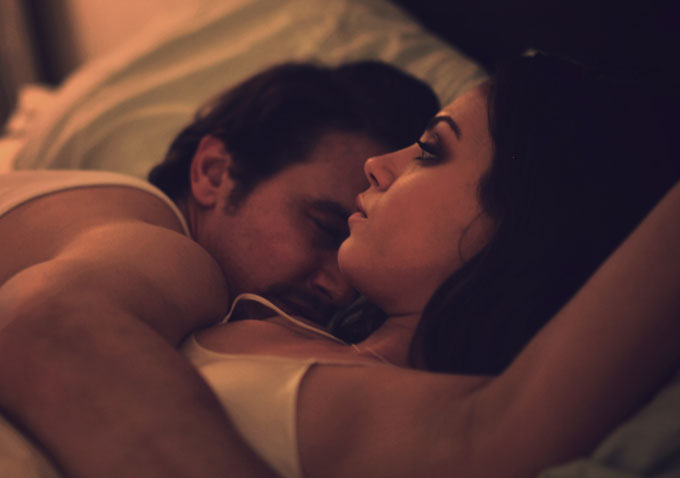Review: ‘The Color Of Time’ Starring James Franco & Mila Kunis Is An Experiment That Falls Short


This is a reprint of our review from the 2012 Rome Film Festival where “The Color Of Time” screened under its original title “Tar.”
It’s difficult to know quite what to make of “Tar,” a multi-authored project seemingly coaxed into being by the sheer force of James Franco‘s current artistic cachet. Playing In Competition in the XXI sidebar of the Rome Film Festival, the film represents the work of twelve newbie directors — NYU film students all — and attempts to create an impressionistic interpretation of the work of poet CK Williams, who himself appears occasionally, reading from his collection. Championed by and starring Franco, amongst a starry cast including Mila Kunis, Jessica Chastain, Henry Hopper, Bruce Campbell and Zach Braff, the film shifts around in time and mood, using four different actors (Franco one of them) to depict Williams at different stages in his life, with the scenes sometimes playing out with internal dialogue and mini-storylines, and other times played mute, with snatches of poetry voiced over. It is to be commended that despite the far-ranging approach and the cadre of people involved in its making, the film doesn’t feel disjointed or particularly uneven, that’s a lot down to shared cinematography and production design departments, we are told. But whether the approach enhances or detracts from our appreciation of Williams’ poetry is another question.

The problem really lies in the last place you might look for it: the originality and resourcefulness of these young filmmakers. We don’t want to do anyone down, but it seems a slight shame to us (and perhaps it was as a result of trying to maintain tonal control over the whole), that, for example, when handed the often autobiographical work of a poet who grew up close to his mother in mid-20th century America, the choice was made to cast Jessica Chastain, and then to essentially recreate half of her “Tree of Life” scenes, right down to the lens flares and the twirling on the grass. It comes across not as homage, but rip off, and does a disservice to the poetry that supposedly “inspired” it, which surely should have engendered a more personal, less derivative response. And this issue carries through even to the less Malickian segments, where the aesthetic may not be of smiling red-haired mothers bleaching dreamily out to white, but is no less familiar. Call it the Instagrammation of our culture, but grainy, blurry, oversaturated/desaturated images no longer mean what they used to mean; at best they evoke ‘Levi’s ad’ and at worst ‘my friend Dave’s holiday snaps uploaded to Twitter.’ It’s still lovely to look at, often, but we’ve seen this cornfield, we’ve seen this closeup of Mila Kunis looking sexy and disheveled, we’ve seen this tender handholding moment between kids — we’ve seen an awful lot of these images elsewhere. Its effect on Williams’ poetry is therefore reductive, taking words that are free and wild and evocative on the page and pinning them to images that could sell perfume. Personally, we’re pro-word, and think these particular ones deserved, not better, exactly, but braver choices.

The XXI section is designed to showcase films that challenge the boundaries of what is considered cinema, whether in format or content. “Tar’ for all the experimentalism of its conception, falls some way short here, and ends up an irreproachably tasteful, easily digestible but an unsurprising, undemanding watch. [C+]





